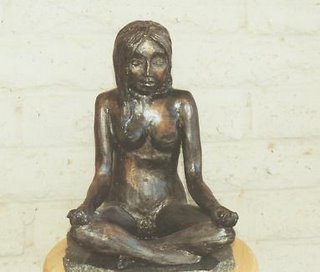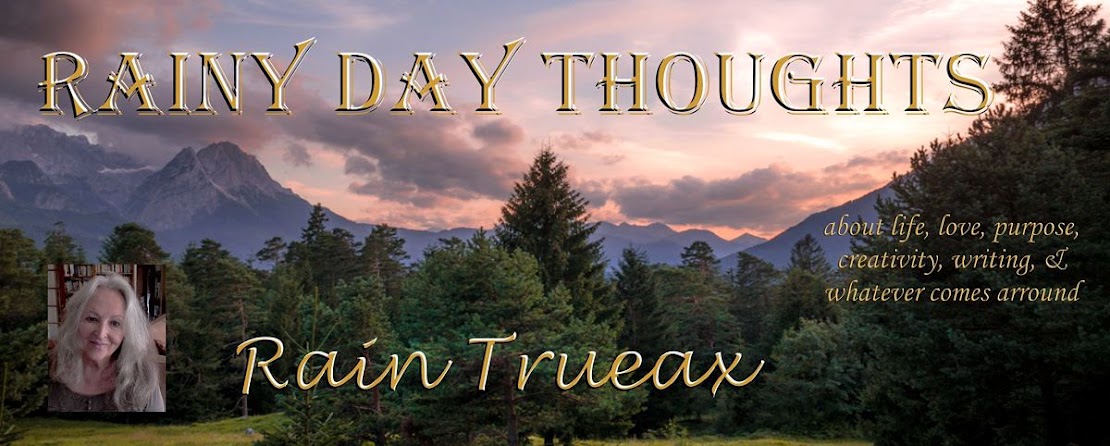 Whether you write fiction, non-fiction, a blog, paint, or sculpt, there is no way that you are not influenced by everything you have experienced-- and that means read or saw. There is a difference though between influence and copying. This last week I read about the plagiarism of Kaavya Viswanathan, the Harvard undergraduate who wrote 'How Opal Mehta got Kissed, Got Wild and Got a Life.'
Whether you write fiction, non-fiction, a blog, paint, or sculpt, there is no way that you are not influenced by everything you have experienced-- and that means read or saw. There is a difference though between influence and copying. This last week I read about the plagiarism of Kaavya Viswanathan, the Harvard undergraduate who wrote 'How Opal Mehta got Kissed, Got Wild and Got a Life.'I would guess, not knowing for sure, that Viswanathan got caught in her own net of deceit. As I have understood what happened there, she submitted a book she had written to a consulting firm who helps students get into Harvard for a fee. The consultant was so impressed that she submitted it to a major publishing house, who was equally impressed and published it. It wasn't until a fan of another author read it and compared paragraphs that the many many nearly exact similarities came out. The young author said-- (paraphrased) I was such a fan of this earlier work, that I was subliminally influenced. Ridiculous (not paraphrased). When you compare the wording, the woman had to have copied the earlier work, changing just a bit and maybe never planned it would be published when she began. She started out just wanting into Harvard.
She's certainly not the first, nor will she be the last. The problem is discerning where is it violating a copyright and where is it taking an idea and growing it-- as a court again decreed Dan Brown did with 'DaVinci Code.' Copyright laws deal with this but clearly publishers can't and don't check every work to be sure it's not infringing on someone else. Each artist/writer should have a sense of ethics to at least not deliberately copy.
I know some of my art has been influenced by earlier works that I have seen but did my own take on. I have never stolen a character, a plotline, wording, painting, or sculpture because, besides the ethical considerations, it would take away the reason for doing creative work to begin with-- turning creation into craft. Part of the difficulty in making art work is the composition and if you take what another artist used, you just lost the chance for your own interpretation.
Copying has been for centuries a teaching method used by some where the student copies the masters. Nothing is wrong with that as a way to understand how they used lighting, composition, to learn the basics. Where it becomes wrong is to sign it as an original creation of your own or, worse yet, with their name on it.
In writing, there are no new plots, even Shakespeare was accused of copying, but to literally take paragraphs and rework them or use fully developed characters changing only their names, that's plagiarism.
A few years back, a well-known writer of romantic fiction got her name besmirched when it was discovered, again by other readers not the publishers, that some of her books were too closely copying the work of an even more famous author. Her excuse was she was pushed for deadlines. She was humiliated as she deserved to be. Possibly she had little by little been doing that and finally it just got to the point where it was blatant-- cheat a little and the next time is easier.
For bloggers, the same issues arise. You read something, see a certain photograph and are influenced by it-- which to me is a compliment to the originator and does not require mentioning where it came from, which you might not even know. So many blogs are putting out the same themes that similarities abound, and they are not plagiarism. This is just my opinion, of course; but if someone sees something on my blog and likes the idea and expands it to theirs with their own twist, I would be pleased-- whether I ever knew they had done so or not. If they used my exact words or photo with it, I would not be.
(Sculpture is mine, titled Hozho-- a Navajo word which can be hard to define but one of its meanings is seeking truth and balance.)

8 comments:
"Hozho" looks like a portrait of you. I mean that as a compliment. Of course some say all our own original cretions are portraits. "Hozho" is very honest. The pose is not unusal for many cultures. It is so usual, no one would consider it to be copied. Except instead of having a stylized face of some ethnic tradition it has a portrait face. Seldom ideas are ours alone. Closely related to copying is the feeling that a creation came so easily it must have come from some mind bank that others have picked up on without ever having seen the similar work. In visiual art copying is difficult and requires one kind of skill. In writing similar ideas probably do not extend to almost exactly copied paragraphs. Is wording important or the basic organization and the core basic ideas? Just a few changes in wording could change the whole intent and meaning of the writing. Unless the work is completely read, it is hard to judge whether or not plagerism occured.
Hozho is a very beautiful, almost haunting sculpture--definitely archetypal to me. Creation. I heard that story about the Harvard student on NPR and it does get confusing about how these things happen. I guess Dan Brown got vindicated.
Many schools use plagiarism software for student work; mine did for a while, but decided it was too much like Big Brother. (They did "catch" someone which was a near tragedy, but turned out to be a blessing in disguise because the student fessed up and got into his college of choice anyway. A powerful teachable moment--but I don't like plagiarism software.
I am often influenced by external sources, especially music and poetry, but am spurred to creativity by internal forces. I usually know when I am copying something, so I use quotes!
Oh I remember when Janet Daily was caught! Broke my heart and I read both her books and Nora Roberts books. I saw the similarity between both books, but I just did not think she would do that. She has not written much since either. Pity.
I saw the interview on THE TODAY SHOW with the young lady in question, and yes they were almost word for word the same. DUMB! SHe said she realize it, and she must have internalized it. PHFFFTTT
Plagiarism is the ultimate insecurity. It is a denial of the creativity that wants to flourish inside of each of us.
Everything I read, all the art I see becomes part of me. Long after I have read a poem - the words and phrases linger in my mind -- Yet part of the joy of reading, hearing, seeing is making it my own.
Beauty in "seeking truth and balance" flows out of your sculpture.
Thanks for sharing this post
Your sculpture
Hi.. When I was going through college, I found that many of the students had no idea what was the difference between using an idea and copying an idea.
IT is a sure thing that it is plagarism if the writer lifts complete paragraphs and characters. But lifting ideas... that is a whole different can of worms. :-)
Of course in our day and age, it is easier to compare written works by using computers. So it is easier to get caught. I think part of the plagarism is caused by certain pressures... the craft of creativity takes time... and we live in the days of "instant gratification."
Enjoyed this post. It gave me a lot to think about.
i enjoyed reading your thoughts, cynthia. It does make a person wonder and I consider it in what I write both here and other places-- the art also. It's impossible not to be influenced by what we see though and just part of the creative process, I believe. I have heard a lot of college students steal essays from online and yes, they might get away with it, but they are really only cheating themselves-- not that they see that
Μy spouse and I stumbled overr here coming from a different web address and thoᥙght I should check
things out. I likе what I see so i am ϳust following you.
Look forwaгd to going over your weЬ page yet again.
Post a Comment